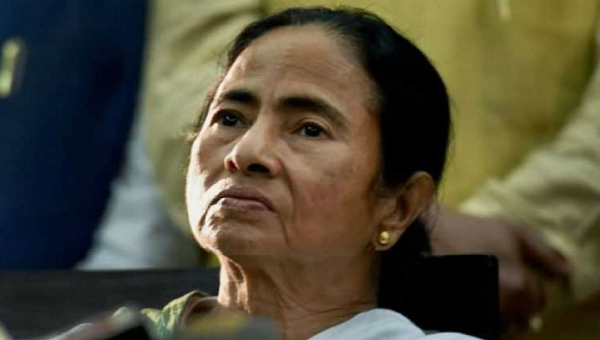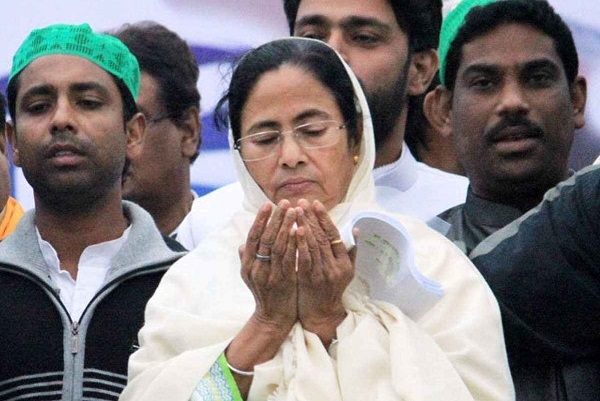BJP underestimated strength of Mamta's cocktail politics of Welfare Populism and Fascism
18 May 2021 15:42:24
The West Bengal election has concluded and the results are as expected. The Bharatiya Janata Party’s (BJP) tally has gone up from previous 3 seats to 77 seats in the Legislative Assembly, a very substantial gain. Trinamool Congress (TMC) scored once again a resounding victory and increased its number from 211 to 213. The Left parties and Congress have vanished. However, it seems that the BJP top brass had expected a much better result and is disappointed.
There are many factors that have influenced the election result. The minor ones can be summarily listed as follows:
• Giving tickets to many disgruntled elements from the TMC who joined the BJP at the 11th hour.
• Giving tickets to politically inexperienced film actors.
• Some remarks aimed at Mamata Banerjee were not appreciated by the womenfolk and back fired.

Nonetheless, these are not the main factors that influenced the voters. BJP underestimated Mamata Banerjee’s strength and her capacity to keep on learning/evolving. She formed a coalition with Congress to defeat the Left Front and came to power in 2011. She had learned from the earlier rulers’ (Left Front) mistake that fertile multi-cropped land cannot be taken away from the tillers, for the sake of building factories.
Tatas’ Nano car project was a particularly stupid one which Buddhadeb Bhattacharya, then the Left Front Chief Minister, had lent support to. When uprooted from Bengal, Tatas shifted the project to Gujarat where there was no dearth of non-arable land; but even there the project turned out to be a miserable failure. The Chemical hub proposed by Bhattacharya at Nandigram was a creditable project, but the Bengali farmer would trade nothing for his extremely fertile land.
Seeds of Fascism (year 2011)
Trinamool Congress, led by politically astute Banerjee, never made the mistake of trying to acquire fertile land for industrial purpose. She learned a few other things from the CPI(M)-led Left Front rule which had lasted 33 years; the Local Committees of the CPI(M) were given control over the police in their areas. Banerjee copied this model but with a difference. She gave control to the ‘Para’ (Parao or Mohalla in Hindi) clubs, as she lacked the ideologically trained cadre like the Communists.
From 2015 onwards, these clubs, numbering about 15,000, were patronized by largesse of Rs 2 Lakh each in the initial year, and thereafter 1 lakh every year. This more or less unaccountable money came from the Department of Youth and Sports, whose budget saw a seven-fold increase. In the last 6 years, 5000 more clubs have been registered and joined the fray. These clubs increasingly drew the unemployed lumpen element, present in the society.
They were entrusted with maintaining law and order in the Para, holding religious festivals, the correction of voters’ list, booth management and mobilizing voters on the Election Day. They collected haftah (Tola in Bengali) from the shop-keepers and sundry petty business activities of the area. They had the monopoly over the contracts for supplying materials to any construction work in the Para. They also supplied the goons on-call to the party in power whenever needed. Wherever these clubs were not in existence, the control over the police administration and afore-listed activities was given to the local Panchayats that were under Trinamool Control. Local gangs of goons were formed everywhere, in imitation of the Action Squads of the Communists, and maintained with the help of unaccounted money raised by Tola-baazi.
Welfare Populism: Cultivating Muslims and Women
Banerjee cultivated two vote banks ̶ Muslims and women. In this she was assisted by a well-oiled think-tank, manned by highly qualified professionals/intellectuals, such as economist Dr. Amit Mitra, Professor-physicist Saugata Roy, dramatist Bratya Basu etc. She gave Imam-bhata to the religious leaders of the Muslim community for a while, till the scheme was struck down by the court. Her predecessor CM Bhattacharya had tried to control the Madrasas, particularly the unregistered ones. Mamata promised a free hand to them before the election and kept her promise. Her shrill opposition to the Citizenship Amendment Bill (CAA) and National Register of Citizens (NRC) assured her Bangladeshi-infiltrator voter base sufficiently and they remained loyal to the last man and woman.
To win the hearts of women, Banerjee took to populist welfarism from the beginning of her rule. She started a slew of schemes (Prakalpas in Bengali) such as Kanyashree, Rupashree, and Widow-pension etc. Kanyashree involves a scholarship of Rs. 1000 per annum to a girl of a low-income family, enrolled in any Class from 8 to 12, followed by a one-time grant of Rs. 25000 when she attains the age of 18, provided she continues to engage in some form of learning/training. Rupashree is largesse of the same amount to a girl of 18 of an economically weak family for her marriage expenses.

Yuvashree is a well thought out scheme in which a youth, with a minimum qualification of Class-eight-pass, can enroll in the Employment Bank; there is an elaborate matching process between employers, trainers and enrolled candidates; then the first one lakh selected youth every year are given financial assistance of Rs. l ,500 per month to enable them to enhance their employability by undergoing some education or training. Then there is the Shikshashree scheme for providing financial assistance to the Scheduled Caste students of Class 5 to 8. All these Prakalpas have been properly implemented, and the Kanyashree has earned international recognition. In June 2017, United Nations honoured Kanyashree with the highest public service award.
To earn the loyalty of the parents of school-going children, she had another list of schemes, such as free distribution of text books, stationary, school bags, bicycles to children of Class 9 via the Sabuj Sathi Prakalpa, etc. She added a boiled egg, sourced from the State exchequer, to the Mid-day Meal of the Central Government. The nodal agency for coordinating these schemes is the Government schools and Madrasas.
Another popular and very creative scheme, formulated and successfully implemented by Mamata’s think tank, is the Swasthya Sathi scheme. It was started in December 2016, much before the Central Government launched its Ayushman Bharat scheme, and is targeted to low-income group of citizens, having a definite cap to their income. It is an insurance scheme for secondary and tertiary medical treatment in private hospitals, paperless, cashless, Smart Card based, up to Rs. 5 lakh per family per annum.
All pre-existing diseases are covered and the State government pays the premium. There is no bar on family size keeping the minority voters in consideration. Initially a few private hospitals refused to recognize the Swasthya-sathi card; this followed arm-twisting by the Government and coercion by the Para goons, and the private hospitals fell in line. On the other hand, the teething problems faced by the private hospitals were addressed by the Government.
Apart from these direct handouts, the Trinamool Congress did engage in some developmental projects. But they were mostly confined to beatification of urban areas and road construction, things which have high visibility and fetch votes. (To be continued…)